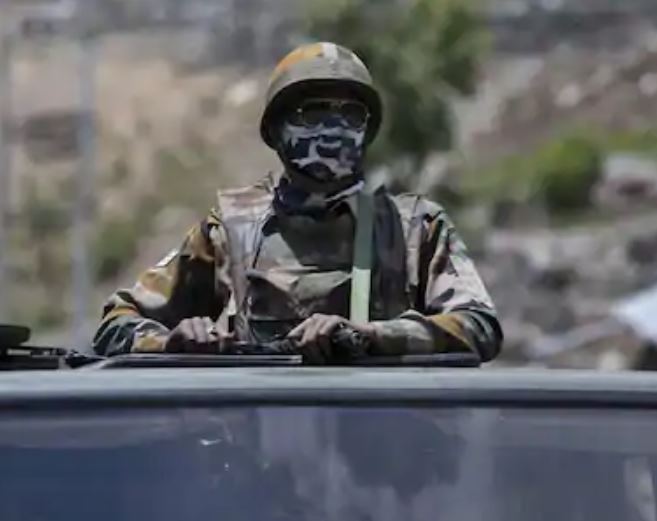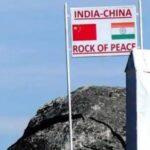WordPress database error: [Table './trishlldefenceac_def/wp_post_views' is marked as crashed and should be repaired]SELECT SUM(count) AS views
FROM wp_post_views
WHERE id IN (8774) AND type = 4
Temperature is continuously falling on the Line of Actual Control (LAC) and Indian troops are being deployed under rotation to maintain their grip in the cold. On the higher peaks, soldiers are being changed in 12 to 15 days, while smart camps have also been prepared for the army personnel posted in Ladakh.
The summer dispute between India and China in eastern Ladakh started in winter. The second week of November is about to end and the mercury in Ladakh has reached minus. Temperatures have dropped from -20 to -25 on the high peaks of the areas of Galvan, Pangong and Southern Pangong, and the wind chill factor in this area causes the temperature to fall by 5 to 10 degrees. After November, this sector gets snow up to 40 feet. In such a situation, the Indian Army is always being deployed to keep possession of its land.
Since the cold is more severe, it is physically difficult for a soldier to be stationed in those areas for which the army is not only strengthening its posts under rotation deployment and the soldiers are protected from the impact of the weather. Is also being kept According to the information, at present, the soldiers are being changed in 12 to 15 days on the peaks. It is not that the Indian Army is not deployed in such high and cold, the Indian Army is also stationed in Siachen in the temperature of -40 to -60 degree. Where the soldiers are kept under rotation for 90 days i.e. three months. After 90 days are completed, other soldiers take their place.
But for the first time in eastern Ladakh, Indian troops are also stationed on the high peaks where the temperature has fallen to -20 degrees from now and it will fall further in the coming days. At present, Indian soldiers are stationed from Thakung to Rejang Pass on the southern side of East Ladakh ie Pangong Lake. Blacktop of these. Peaks like Mukhapari, Rezag La, Rechin La were captured from 29 to 31 August.
Strategically, all these areas are also very important because of their occupation, China went on the back foot and that is the reason why it keeps repeatedly rushing to clear the south area from Pangong in the meeting. Due to the ongoing tension between India and China, India has made its deployment according to the deployment of China, which is called Mirror Deployment. Around 50,000 Indian soldiers are currently stationed in Ladakh. Ration, kerosene heaters, special clothes, tents and medicines have been stored for the entire winter as part of a major campaign.
Recently 11000 sets of special clothes for the use of soldiers in extremely cold weather have been taken from America. At the same time, for the troops deployed in high altitude and super high altitude, the tents which remain warm as well as smart camps have been prepared for all the soldiers posted in Ladakh. In which all the needs related to electricity, water, heaters, hygiene and health have been met. Soldiers stationed at high altitudes undergo a fixed procedure before deployment. This is called acclimatization process, which has been divided into three stages. Before deployment at stage 1 ie 9 to 12 thousand feet, the soldier is done in the same environment for 6 days of acclimatization, after that stage 2 starts which is four days of acclimatization before deployment at an altitude of 12 to 15 thousand feet. Goes and the elevation above 15 thousand is called Stage 1 for 4 days or every 1000 feet every two days acclimatization is done.
These stages are crossed because as the height increases, the oxygen starts to decrease and the winter is too much, then the body is passed in the same environment so that the body of the youth becomes addicted and lethal disease like HIGH ALTITUDE PULMONARY Be ready to deal with EDEMA ie HAPE. However, the way to reach the post is open, so that there is no problem in Adam’s support at the moment, but as soon as the snowfall makes it difficult to reach the peaks, the difficulties are sure to increase.



